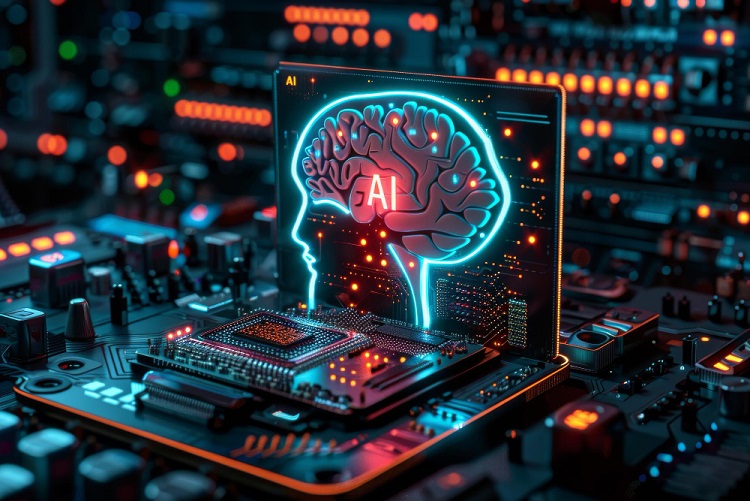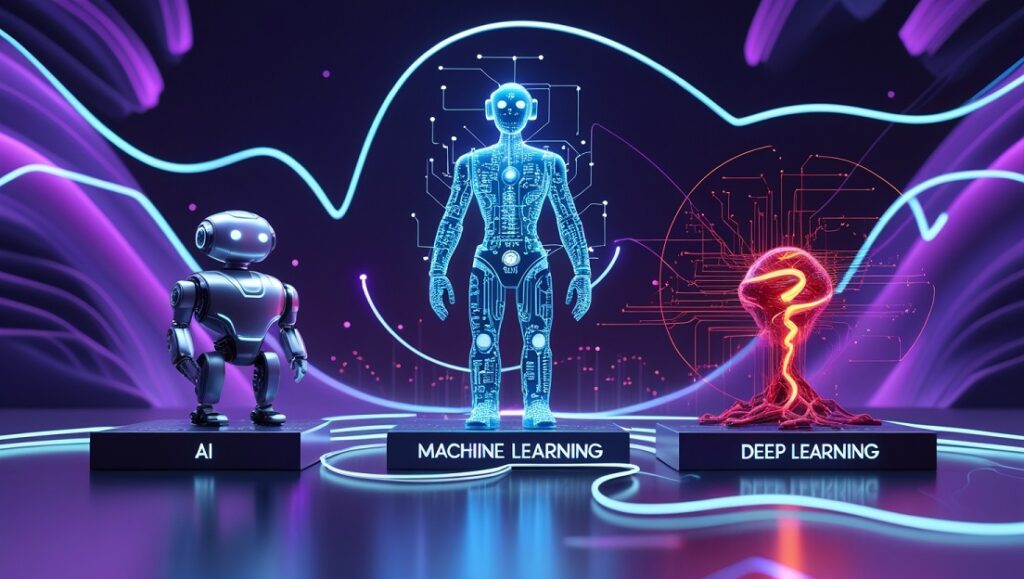
Introduction
Ever curious about how your phone remembers the next word or how autonomous cars read busy city roads? Artificial Intelligence (AI) is no longer science fiction far into the future—it’s a part of the fabric of our everyday lives. From voice-driven driving assistants to supply chains optimized by AI, the transformative potential of AI is finally here. In this article, we will map the rise of AI, rank top subfields, explore pioneering learning, and consider a future in which human collaboration with intelligent machines is possible.
What Is Artificial Intelligence?

In simple terms, Artificial Intelligence is the ability of computer programs to do things that are typical of human intelligence—sensing, learning, reasoning, and decision-making. They can also improve without being reprogrammed by doing new information in a better way.
It was conceived during the 1950s when John McCarthy and others invented “Artificial Intelligence” during a summer workshop at Dartmouth College by making an educated assumption that “every kind of learning or other kind of intelligence can in principle be described so as to permit the description to be executable by a machine in order for it to duplicate the behavior of the item.”
AI vs. Machine Learning vs. Deep Learning

In order to gain some understanding of contemporary AI, it is useful to outline its main subfields.
| Concept | Scope | Core Idea | Examples |
|---|
| Artificial Intelligence | Big umbrella for everything smart | Systems emulating human patterns of thought | Chatbots, autonomous vehicles |
| Machine Learning (ML) | Sub-subfield of AI with specific emphasis on learning from data | Algorithms learn and adapt based on exposure to data | Recommendation systems, detecting fraud |
| Deep Learning (DL) | Sub-subfield of ML using multi-layer neural networks | Brain-like in structure; very good at detecting complex patterns | Image tagging, natural language processing |
(For a quick read, see our Machine Learning article.)
Key Insights & Trends
1. Adoption Speed: The Gen AI Boom
In February 2024, 65% of businesses reported using generative AI (gen AI) on a regular basis—up nearly two-thirds from the previous year’s level—while use of AI across overall business functions was at 72% aggregate. Companies are integrating AI agents into processes, moving toward an always-on economy where decisions and activity take place around the clock, outside normal work hours.
2. Economic Contributions & Productivity Benefits
McKinsey estimates the value of the contribution of corporate applications of AI in the future to be $4.4 trillion in the next decade. To put this into perspective, the IMF estimates AI to be capable of boosting world GDP growth by 0.5% between 2025 and 2030, which will be greater than the associated environmental cost.
3. Environmental Footprint
AI’s computing hunger carries consequences: data centers could add up to 1.5 gigatons of CO₂ by 2030—comparable to Italy’s five-year emissions. Yet, when harnessed for sustainability (e.g., optimizing energy grids), AI presents a pathway to decarbonization.
4. Ethical & Safety Considerations
The First Independent International AI Safety Report (Jan. 2025) identifies AI-generated deepfakes, cyberattacks, and loss of control over future systems as dangers. Policymakers are cautioned to bring security into harmony with innovation in advance. Regulators, meanwhile, combat chilling rampages of AI-produced illegal content and lead to novel rules and protections.
5. Security & Governance
Home security analysts foresee vulnerability of AI data datacentres to sabotage and espionage and demand hardline supply chain and containment policies as super-intelligent machines arise.

Equilibrium Between Innovation and Responsibility
The potential of AI is risk-incurring. The leaders need to invest in
- Open Governance: Establish ethical norms on the pattern of UNESCO’s Recommendation on the Ethics of Artificial Intelligence.
- Human-AI Collaboration: Develop infrastructure to complement and not replace human know-how.
- Sustainable Infrastructure: Integrate energy-efficient hardware and green energy into data centers.
- Ongoing Learning & Auditing: Do bias audits and safety training to ensure public trust.
Conclusion & Call-to-Action
Artificial Intelligence stands at a crossroads: by 2030, it can remake economies, transform industries, and even reshape the human condition. Your voice matters as AI practitioners, decision-makers, and curious readers.
What does the future of AI look like to you? Share your thoughts in the comments below, subscribe for deeper analysis, and read our Machine Learning and Data Ethics series. Let’s co-create an AI-driven world that is creative, just, and sustainable.


